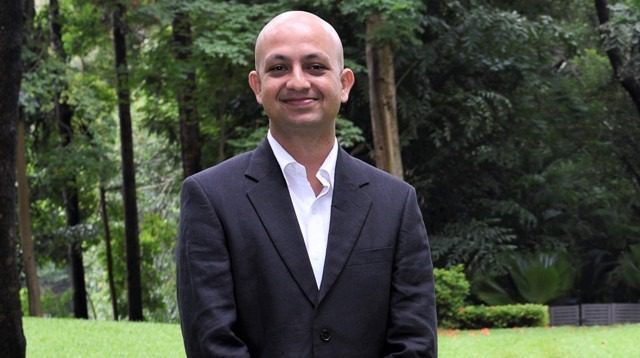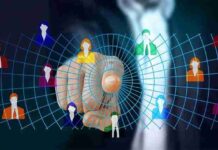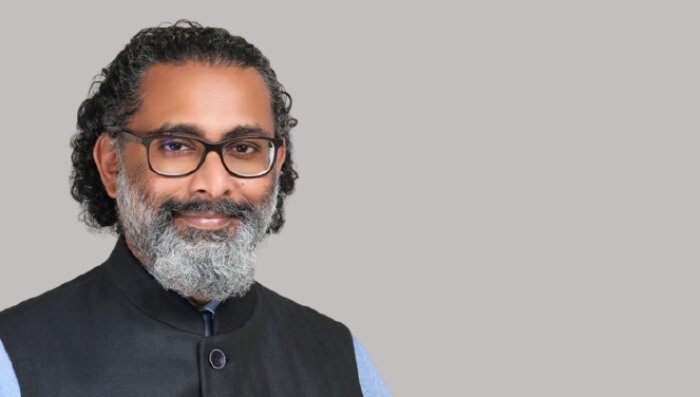IoT, Big Data and Analytics are closely intertwined though they are not the same things; it is very hard to talk about one without the other. Organizations today must learn to adopt the new IoT (digital technology) and Big Data application tools in order to utilize information effectively for timely and informed business decisions across the organization.
We are privileged to have discussion with Nikhil Morade – Global Head HR Technology & HR Analytics at Tata Technologies. He shares with us his thoughts on what is Internet of Things and its Significance in Human Resources.
Q- What is Internet of Things (IoT)?
The first version of the internet was about data created and consumed by people, while the next version is about data created and consumed by objects (read electronic devices with sensors) in addition to people.
Simply put, Internet of Things (IoT) is exchange of data between objects& people through integrated network giving rise to new types of smart applications and services.
The internet revolutionized and provided possibilities in ways we could never have thought were possible. IoT will take us beyond connections to become part of a living, moving, global nervous system
Three pillars for IoT to function are
- Sensors & Actuators [read as digital nervous system]
- Connectivity
- People & Processes
Neil Gross in 1999 made prediction for IoT – “In the next century, planet earth will don an electronic skin. It will use the Internet as a scaffold to support and transmit its sensations.”
Q- What is impact of IoT on Human Resource Management and People Strategy?
As per the global research organization Software.org: the BSA foundation, by 2020, there are predicted to be50 billion devices connected to the Internet. A trend this widespread is bound to impact how global organizations operate. Organizations will need to developand evolve their existing roles to create new roles to deal with this hyper connectivity.While humans are still at the centre of all these machines, HR leaders will need to start addressing how the IoT will impact their talent management and workforce-planning strategies in the years to come. There will be new jobs, new tasks and new skills required to achieve next level of economic activity in IoT world.
HR leaders are anticipating the disruptions through IoT will lead to revaluation of workforce planning & recruiting strategies, skills building, employee benefit administration, employee wellness, How & Where aspect of workplaces.
As employees bring Internet connected watches, smart devices, fitness devices, and more into the workplace, specific policies will need to be developed for information security and personal privacy.
Q- How IoT innovation can help in improving employee experience and better productivity?
The latest and greatest IoT developments will enable you to get more in less time thus improving productivity.
Take this example that’s already happening around us – it’s morning and you’re in a rush to get quickly to your office. The intelligent park assist system will direct you to available parking slot and has already marked your attendance which means you don’t need to provide biometrics or show your identity card in the electronic slot. Once the office system marks attendance, your desk space switches on the light to the exact brightness you are comfortable with, scans through your calendar for the day, and in case of meetings, even blocks the conference room at the right time.
The Internet of Things will help individual companies to limit the waste factor in global economies.
Employee wellness
To combat the rising cost of health care, global organizations are implementing a wide range of employee wellness programs, which are not only improving employee health, but also bottom lines.
Wearables associated with fitness are being considered by some organizations as novel tools to motivate employees to stay healthy and fit. IoT applications like locations trackers, fitness bands could help in enhancing employee’s wellness and safety in a preventive rather than reactive way. Many organizations are innovating to incentivize employees for staying above target fitness levels, thus a win-win situation for both, – organization and employees.
Smart buildings
An often-overlooked strategy to promote productivity lies in the organization’s physical infrastructure and the technology that powers it.
With IoT, companies can save energy while keeping the office work environment comfortable, reduce cost to run business by deploying cheaper and greener technologies.
The intelligent, networked and fully sensor building is one of the most valuable applications of the rapidly-evolving IoT. Be it in industrial spaces like manufacturing floors or more traditional office settings, the smart building has proven to dramatically increase employee productivity, engagement and happiness.
Connected platforms can consider occupancy, weather conditions, time of day to maximize energy savings without employee distraction. Not just that but, importantly personalized to employee’s preferences. For example, intelligent lighting systems offer dim settings so that light only goes on in a section of a facility or is dimmed at a certain level or rate depending on staff utilization, occupancy or availability of natural light, which makes for a friendlier, less distracting environment. This is particularly useful for third-shift employees, as lights can be set to a level designed to help employees stay awake as they work through the night.
Rethink Workplace
The advent of internet to a large extent changed the way we work; more work can be done remotely. People can get work done when they are away from workplace – from home, during their commute or any remote location. More and more the workplace started being everywhere around us, blending personal life and work environment. The advent of IoT will further extend these capabilities to create flexible workspaces.
Q- How do you see role of IoT in Employee Engagement & Retention?
One of the biggest HR challenge of all times is employee engagement.
The challenges around employee engagement would manifold as demands on employee’s time is increasing. The business environments are becoming complex and employers are looking for productivity gains, keep costs down and innovate too. IoT can pave the way for HR to perform its business based on verifiable employee analytics which has always been difficult to get hands on.
When devices get to know us better, technology can instantly have an impact, creating better experiences.
Employee vitality and well-being
Physical and emotional health is the key to workforce productivity. Smart wearable devices like fitness bands, smartwatches, activity trackers can not only help employees stay healthy, but the data generated from these devices can also help the HR to find collective information about their workforce vitality and intervene to address the need for any change in work place dynamics if required. It may lead to innovations in work place ergonomics. Prescriptive data could give HR the capability to develop insights of workforce productivity, travel trends, effect of location change on employee productivity etc.
Building synergies
Sociometric badges carried by employees can be used to track an employee’s location, anxiety or the stress levels through voice tone and heart beat etc. For the logistic industry, it could help in tracking the monitoring speed of the drivers, eliminate the idle time between deliveries, gauge efficient and safer routes etc, all through an IoT software. One of the examples of an organization is of Deloitte Canada, who redesigned their work place using the data from their employees’ sociometric badges.
With IoT, HR can gauge the tone of employee conversations to gather data on employee satisfaction.
Q- What are the other important aspects to consider?
While IoT offers endless capabilities, it is important to consider below aspects when evaluating
Tailor fit: Every organization is unique. To better plan IoT journey, consider pressing needs of the organization. Organization culture & digital adoption maturity will play vital role in IoT success.
Capabilities to deal with Big data: Managing the influx of big data is a completely different issue. Ensuring that the data is used efficiently and is accessible to those who need it will require a new crop of processes and operating procedures.
Security Breach: IoT is also susceptible to vulnerabilities such as authorizations, software protection and hacking.
Privacy: HR leaders should consider issues of privacy and security. HR teams and employees must understand where employee’s data is being stored, how it is being used, who has access to the data, what its purpose is and how secure the data is.
In conclusion, IoT will transform the way organizations do business. The possibilities with IoT are exciting and infinite.
Author- Nikhil Morade – Global Head HR Technology & HR Analytics at Tata Technologies. He has managed and implemented multiple large technology transformation initiatives across diverse geographies. He leads all digital, automation and digitization programs for HR. Global HR function in Tata Technologies is structured as Global Center of Excellence(CoE), Regional& Global HRBP and Global service delivery. Functions strategies & initiatives are centered around Talent, Leadership & Culture.
HR Tech CoE leads tech roadmap for HR function, currently evaluating &piloting transformation programmes through digital technologies like Artificial intelligence, Machine Learning and Robotic process automations as tech solutions to increase recruitment sourcing efficiency, personalization of employee learning and automation of repetitive transactions.









